Summer is the time for bugs, and not always the good kind! There’s nothing worse than going on a relaxing camping trip near a beautiful river or lake, only to get eaten alive by mosquitoes the whole time. The only problem with commercial bug spray is that there is often toxic chemicals in them that many of us don’t want to put on our skin. But, thankfully, there is a natural alternative, as there are many plants, herbs, and flowers that repel unwanted bugs! I have come up with this herbal no bug balm recipe to share with you.
Bug Repelling Herbs and Flowers
There are many plants that naturally repel bugs, some you probably already have out in your garden!
Here are a few that are particularly good at repelling mosquitoes:
- Lemon Balm
- Citronella
- Peppermint
- Lavender
- Lemongrass
- Catnip
- Basil
- Lemon Thyme
- Lemon Verbena
No Bug Herbal Infused Oil
The first step in making this herbal no bug balm is to make an infused oil with any combination of the herbs above. I used lemon balm, lemongrass, lavender, peppermint, and catnip.
If you need to purchase them, Mountain Rose Herbs is my favorite place for organic, high quality dried herbs.
It’s best to use completely dried herbs when making your infused oil so that it doesn’t go rancid. Simply fill a pint or quart sized jar ⅓ to ½ full with dried herbs, then fill it with a carrier oil of your choice.
I like to use a blend of equal parts olive, coconut, and sweet almond oils. Cover the jar with a lid and place in a cool and dark place for about two weeks, then strain out the herbal material when ready to use.
How to Make Herbal No Bug Balm
When you’re ready to make the balm, strain out the herbs from the oil.
Then create a makeshift double boiler by putting a small bowl or a glass Pyrex measuring cup over a pot with about an inch of simmering water.
Put the infused herbal oil and beeswax into the small bowl or Pyrex, and heat until the beeswax completely dissolves into the oil, stirring occasionally.
Add the shea butter (if using) and stir until it completely dissolves, then stir in the essential oils.
Carefully pour the mixture into small jars or tins and let sit until the balm sets up completely.
How to Use Herbal No Bug Balm
This herbal no bug balm does have a bit higher concentration of essential oils than I usually use in my herbal salves, but they are necessary to help keep the buggies away!
Before using it on children, or for those of you with sensitive skin, I recommend doing a small patch test on the back of the hand before use.
A thin layer is all you need to help keep bugs at bay. As with many natural no bug products, you may need to reapply more often than you would a chemical product.
I hope you make this herbal no bug balm so that you can keep those annoying mosquitoes away naturally! It’s pretty awesome what herbs and flowers can do for us, isn’t it?
My Favorite Herbal Salves
Nourish and restore your skin with these other homemade salve recipes!
Herbal No Bug Balm
Ingredients
No Bug Herbal Infused Oil
- dried lemon balm
- dried lemongrass
- dried lavender
- dried peppermint
- dried catnip
- carrier oil of choice I use equal parts olive, coconut, and sweet almond oils
No Bug Balm
- 1 cup infused herbal oil see above
- 1 ounce beeswax
- 1 ounce shea butter optional
- 36 drops citronella essential oil
- 18 drops lemongrass essential oil
- 18 drops lavender essential oil
- 12 drops peppermint essential oil
Instructions
No Bug Herbal Infused Oil
- Fill a pint or quart sized jar ⅓ to ½ full with dried herbs, then fill it with a carrier oil of your choice.
- Cover the jar with a lid and place in a cool and dark place for about two weeks, then strain out the herbal material when ready to use.
No Bug Balm
- Create a makeshift double boiler by putting a small bowl or a glass Pyrex measuring cup over a pot with about an inch of simmering water.
- Put the infused herbal oil and beeswax into the small bowl or Pyrex, and heat until the beeswax completely dissolves into the oil, stirring occasionally.
- Add the shea butter (if using) and stir until it completely dissolves.
- Stir in the essential oils.
- Carefully pour the mixture into small jars or tins and let sit until the balm sets up completely.
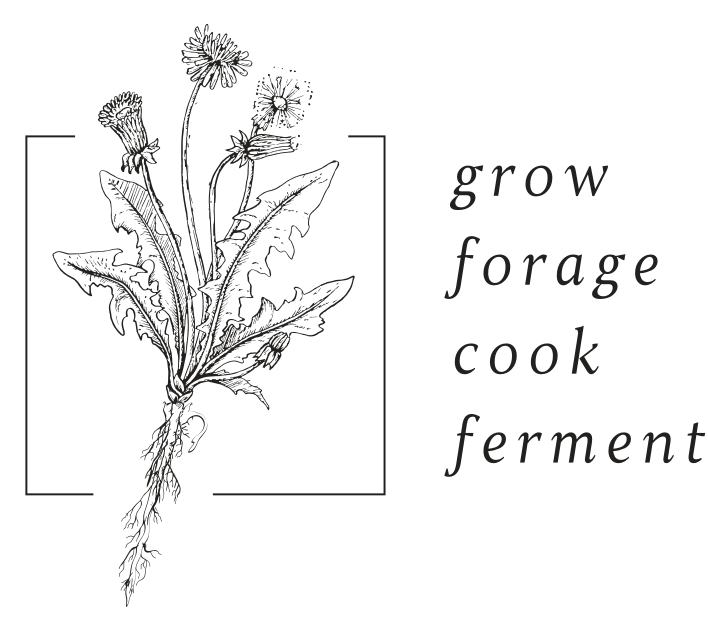
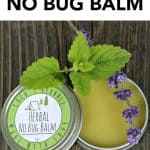
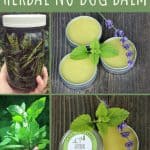
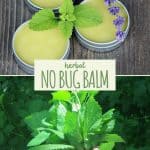
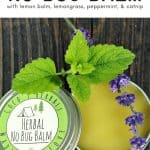
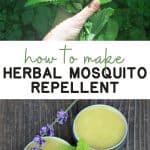
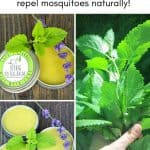
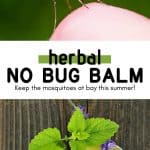
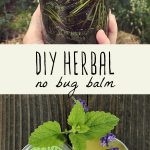
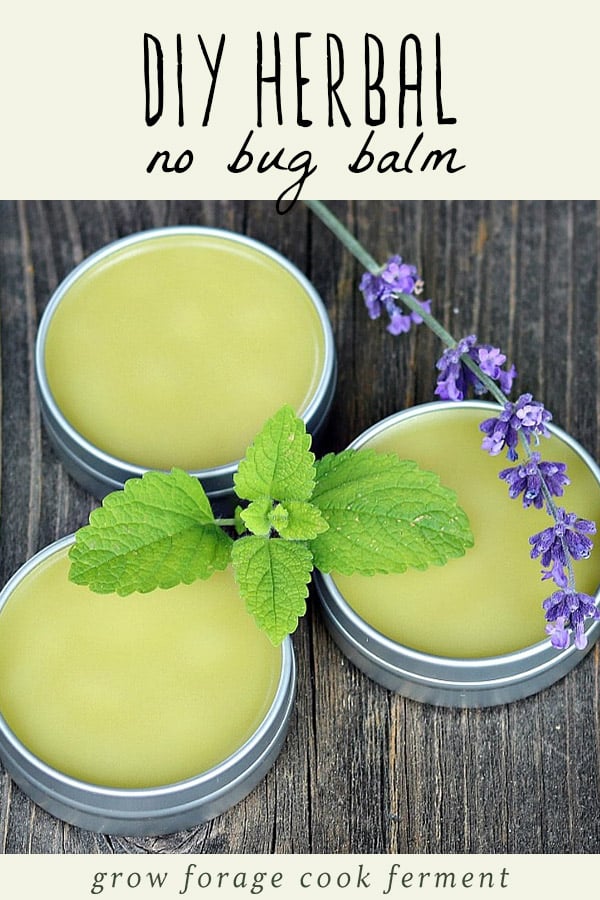
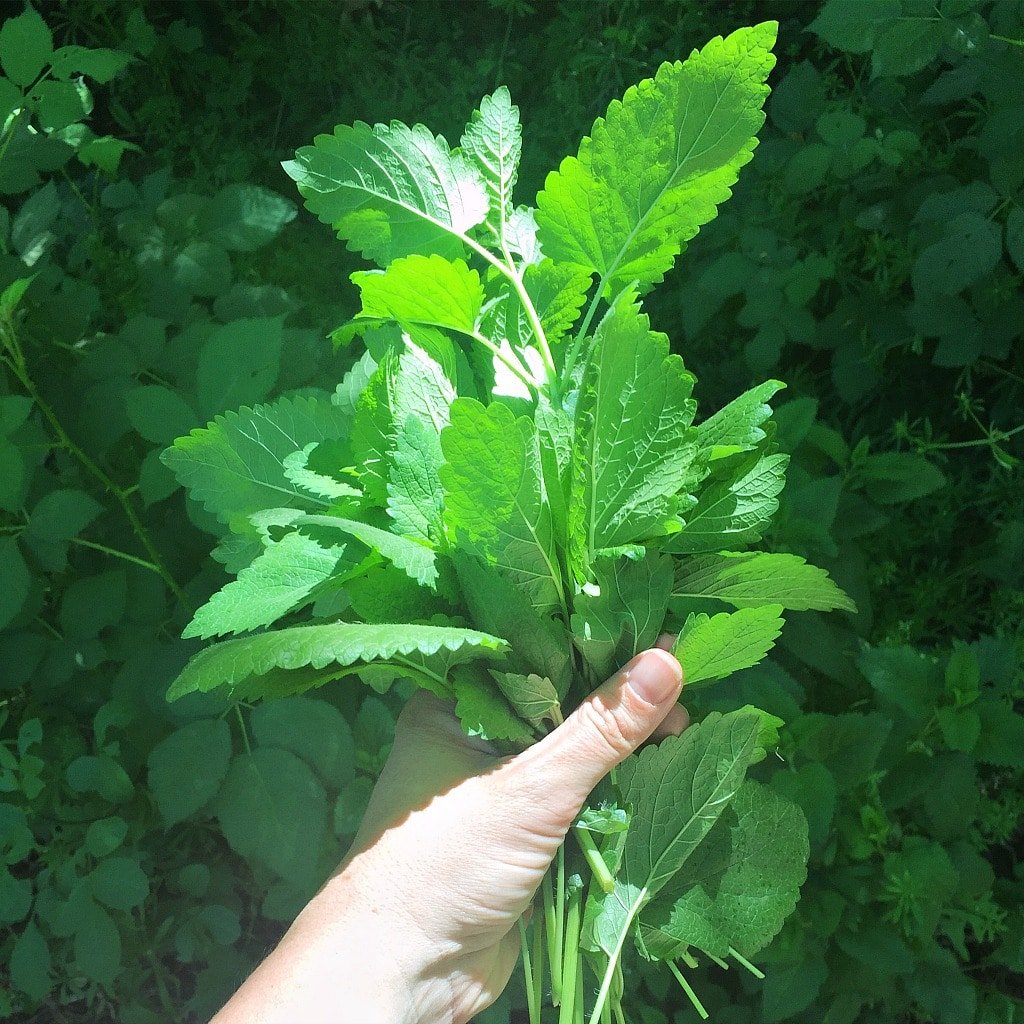
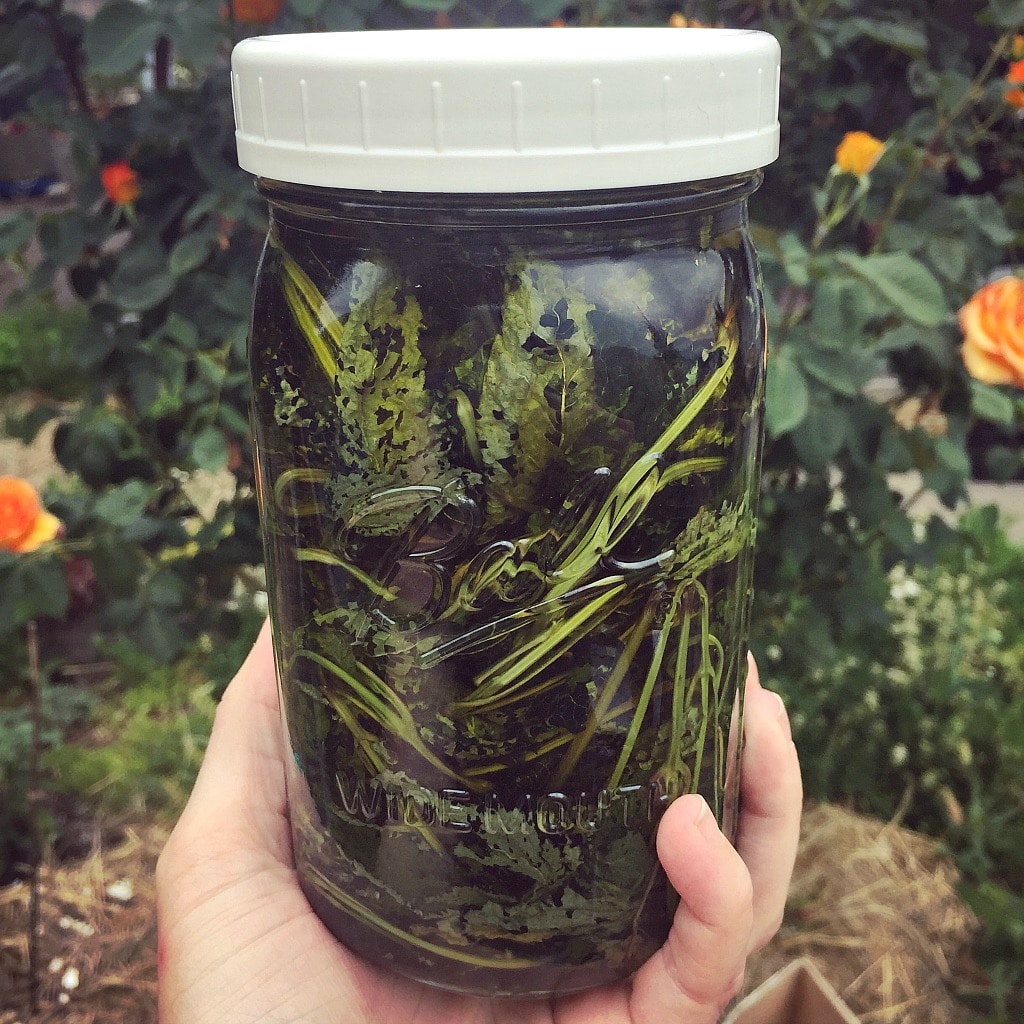
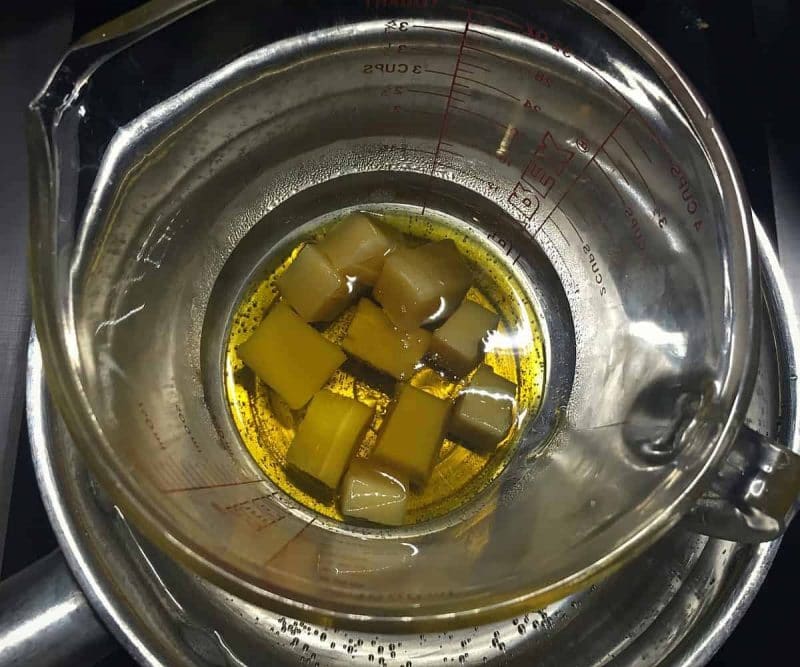

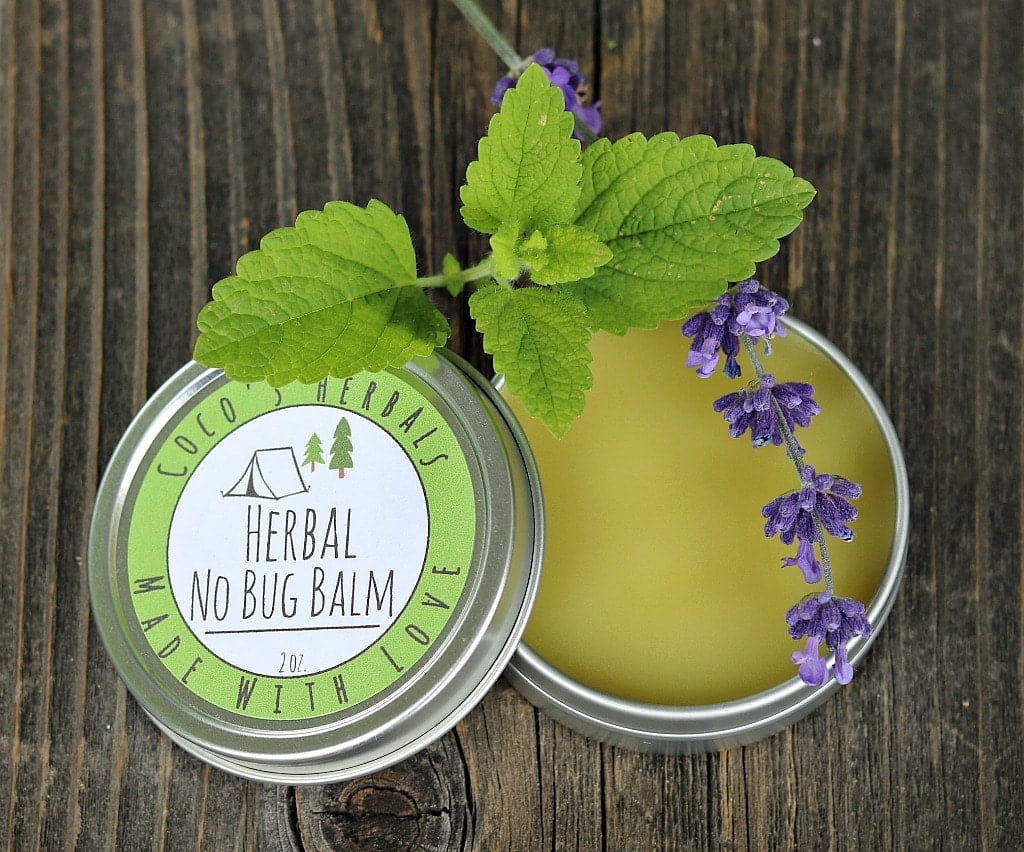
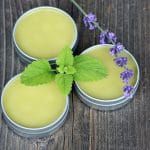

I’m confused. Isn’t the dried herbs in oil essentially making essential oils? So why do we need to add more essential oils? What is the benefit? It seems like you could skip the first step and go right to the second step. Please explain. Thanks!
Hi Marion. No, essential oils are highly concentrated substances extracted from various parts of the plant. Common methods of extraction include distillation (steam, water, or dry) and mechanical methods like cold pressing. Essential oils are added to this recipe because their aroma is highly potent, unlike those of infused oils. Infused oils on the other hand, are much less concentrated compared to essential oils. They carry some of the flavor, scent, and therapeutic properties of the herb, but are milder and generally safer to use directly on the skin.
Can this be put into an empty deodorant container, that way I can just glide it on?
Absolutely!
Just a question:
Got all these fresh in the garden or frozen – except catnip – now – can i use the fresh ones – or do i have to first “dry them”?
(to me – that makes no sense – frankly – sorry to be so blunt)
Thank you for your appreciated feedback ♥
Hi there. You’ll need to dry the herbs first otherwise the additional moisture will shorten the shelf life of your balm.
My lemon balm is going crazy. I can’t wait to make this. Do you share your label? It is perfect.
Hi Nancy. No, I’m sorry, I don’t have a template for the label. I used to sell herbal products on Etsy, which is why I had these labels!
Being a Cat Lady, ( yes, crazy too) I would worry about the Catnip in the recipe. Rubbing Catnip oil all over then going hiking makes me wonder how many Bobcats and Mountain Lions I would be playing with on the trail. Because believe me, Big Cats do LOVE Catnip!
Just wanted to throw a little laugh your way since you were speaking of mosquitoes eating you alive. I’d be more worried about the Mountain Lions! But I do want to try this. You do know that mosquitoes only eat the sweetest! Thank you for sharing this recipe with us.
😂 I never considered that. Thanks for the laugh.
Hi! What is the shelf life of the balm once made? Thanks!
At least 6 months, much longer if you refrigerate it.
Do you need to use all of the dried herbs that you mentioned or can you just one for your no bug balm ,also can you make your own rosehip seed oil using dried rosehip from mountainroseherbs. Thanks for your great recipes
Hi Barbara. Yes, you can omit some of the herbs in the no bug balm, however, it may not be as strong a deterrent as if you were to use all of them together. Rosehip seed oil is made by pressing the fruit and seeds, which can be difficult to DIY at home without an oil press machine. If you have one or are thinking of investing in one, then yes, you can make your own rosehip seed oil.
If I add more bees wax can this become a lotion bar?
Yes, that will work! I would probably add an additional 2 ounces.
Do i need the essential oils to repell mosquitos. Or will the oil that i made early on in the recipe with my dried herbs do the trick? Are the Essential oils just for aroma or for the mosquitos
How much of each dried herb to you use to make the infused oil?
I have a silly question. Do you have to apply the salve to all exposed skin. I’ve heard of some ‘concoctions’ that only require a small amount to be apply to one area (as though it would transfer into the blood – like what is applied to pets, maybe).
Thanks
I have been looking all over the I internet for that answer.
what can I use instead of shea butter could I use coconut oil instead.
This sounds great! If I’m going to add some zinc oxide to this recipe to give some SPF as well.
Where do you purchase your tins at?
Mountain Rose Herbs! https://www.mountainroseherbs.com/catalog/containers/tins